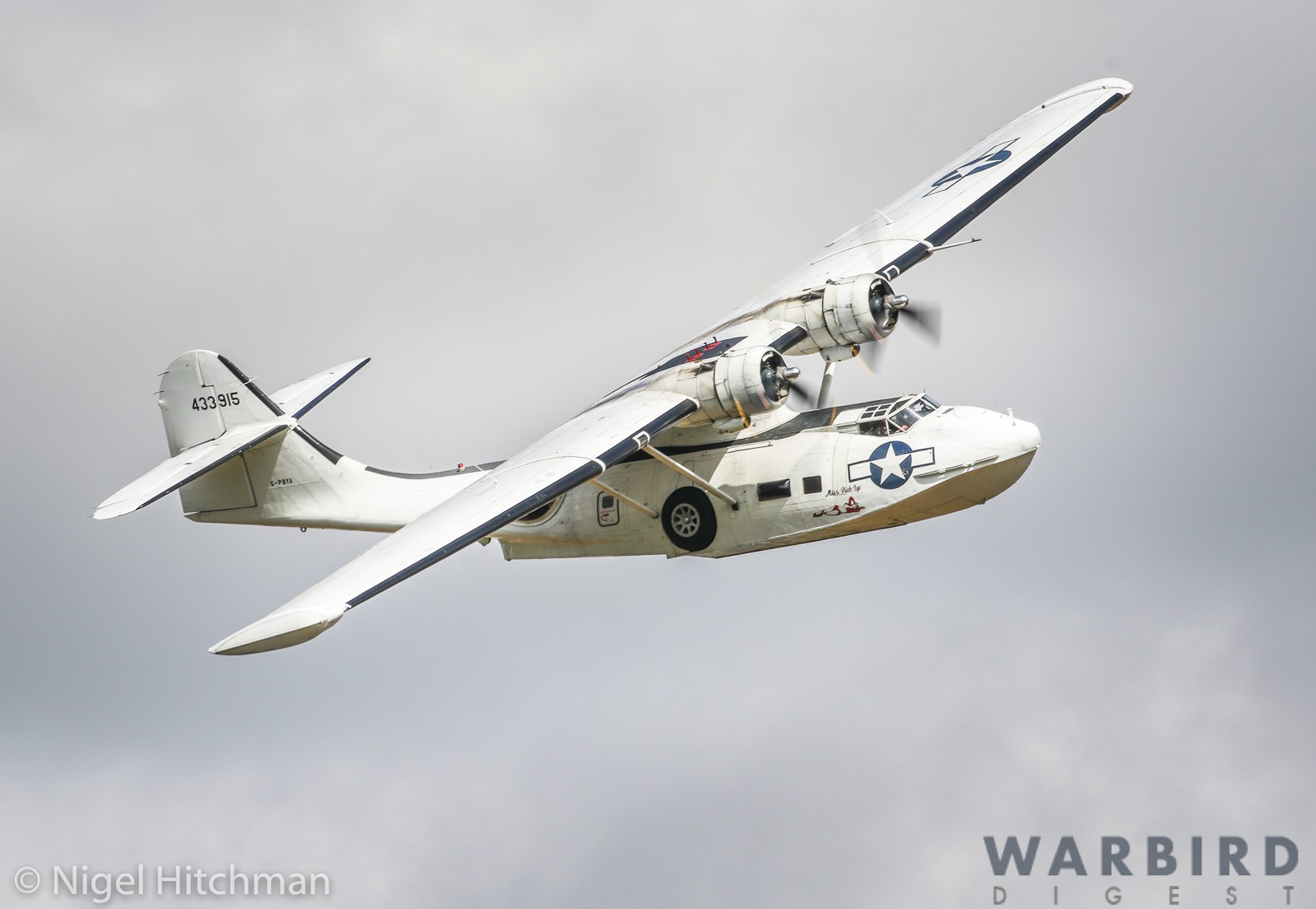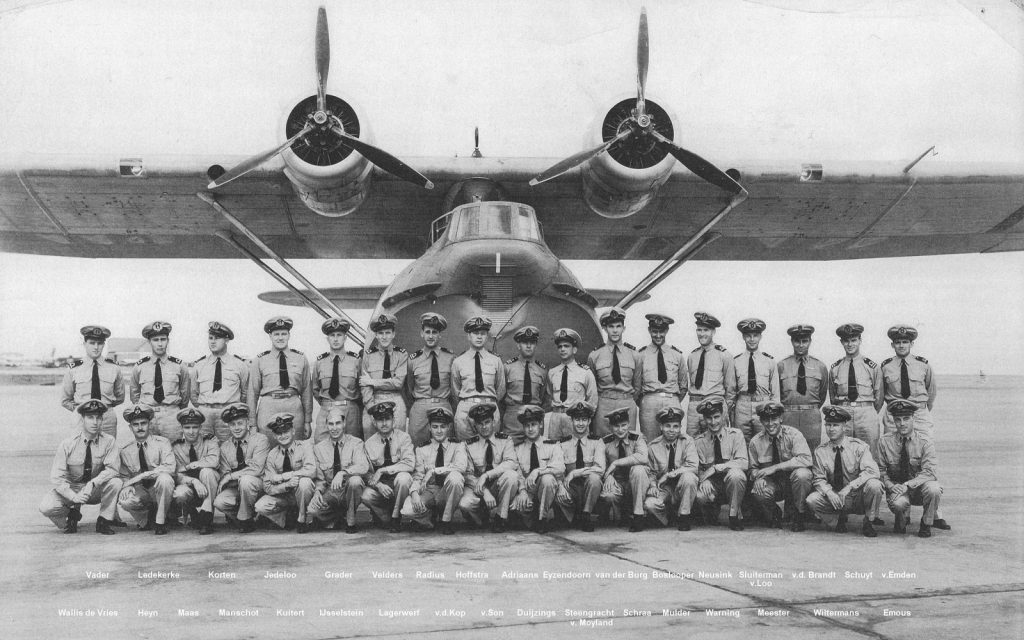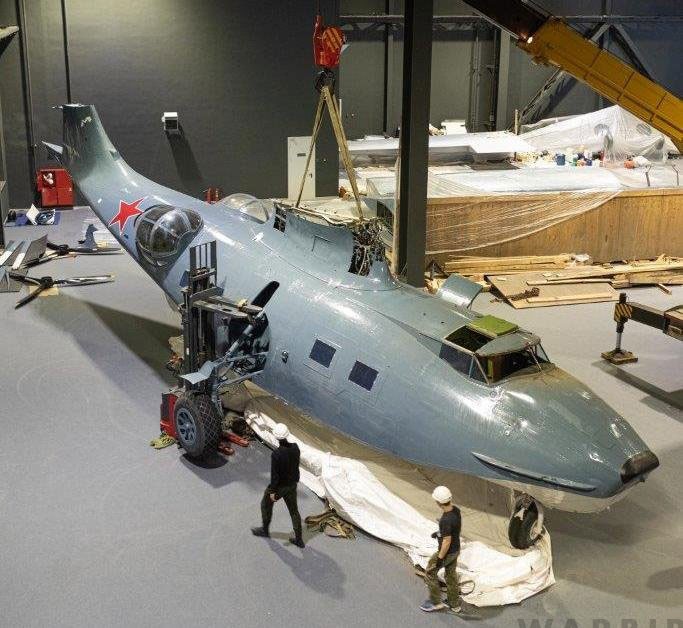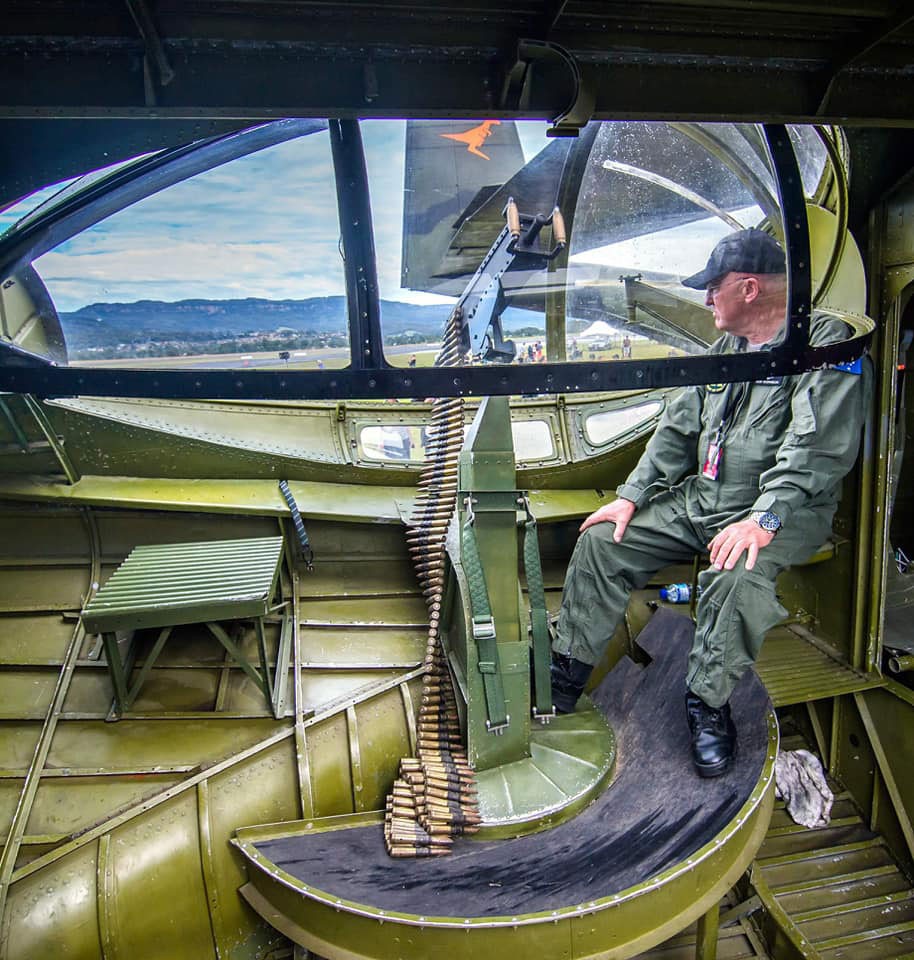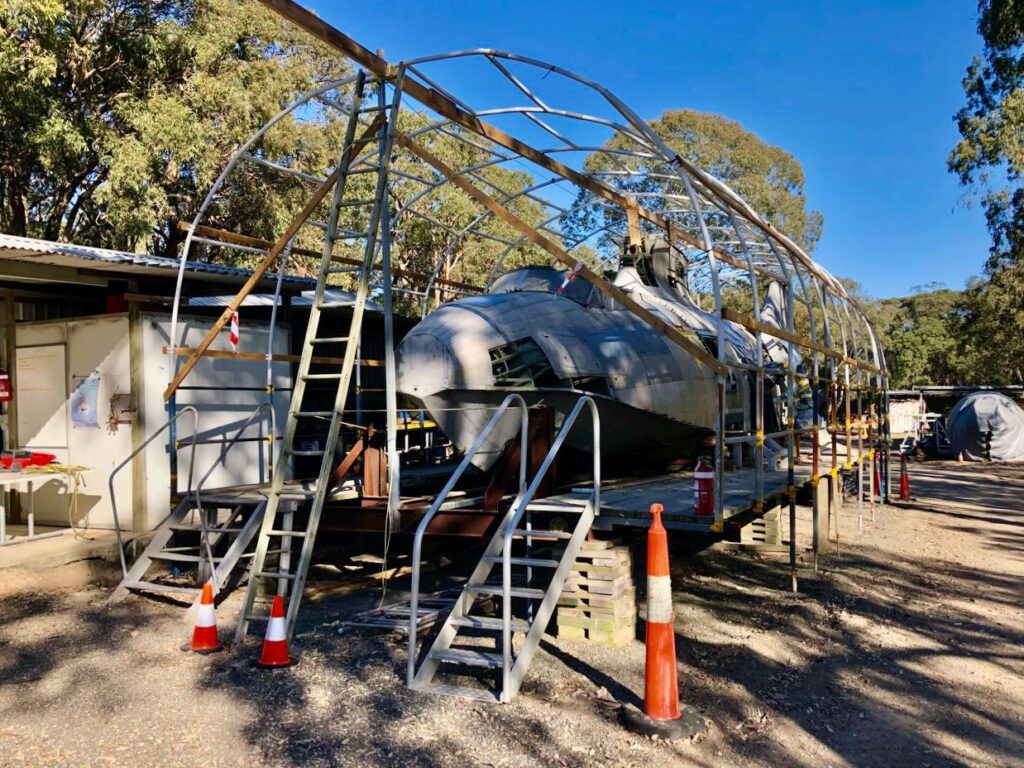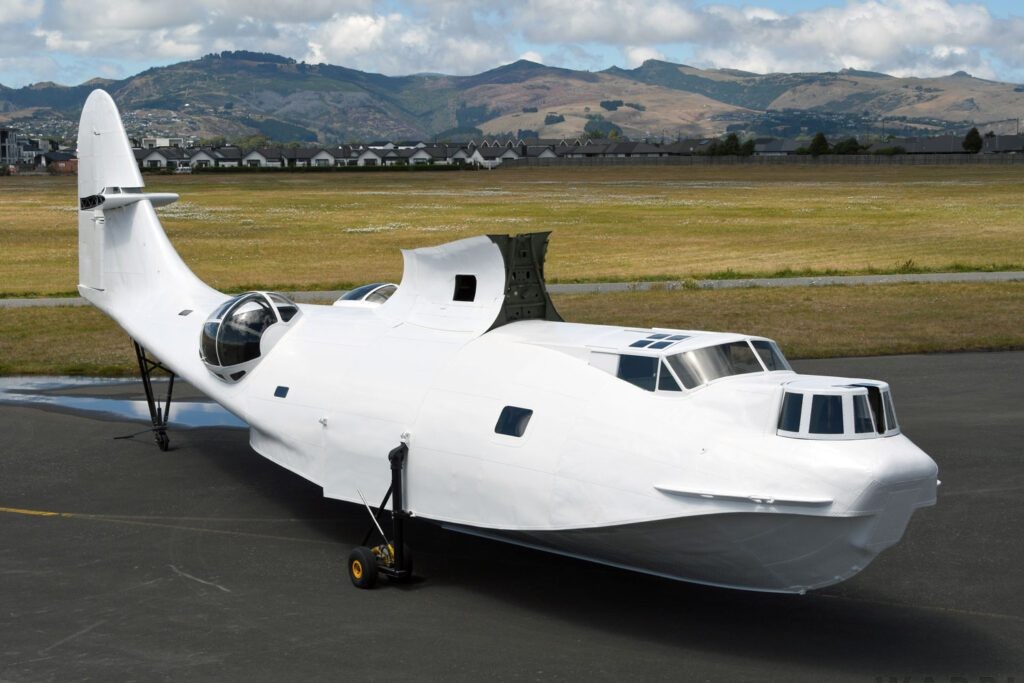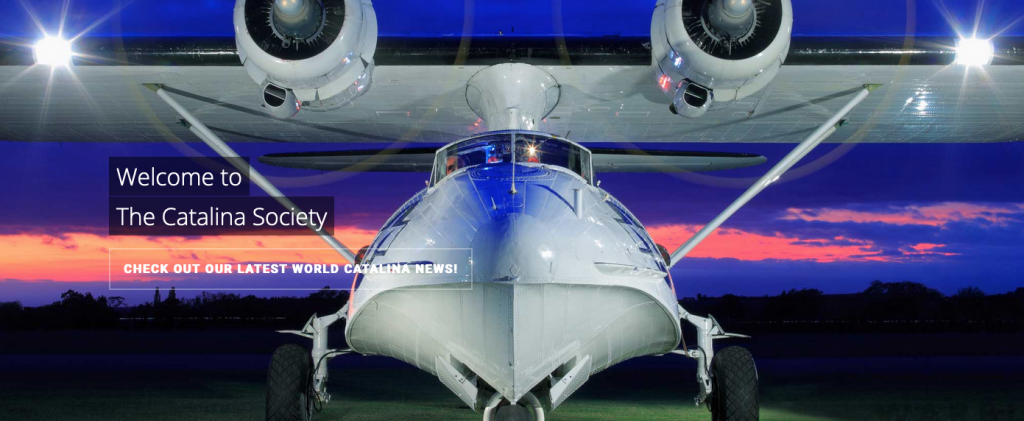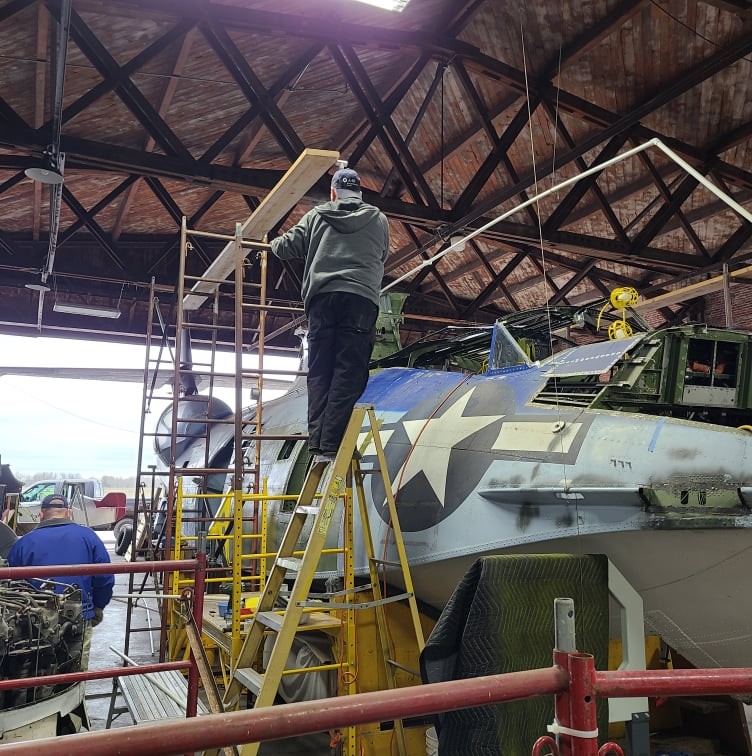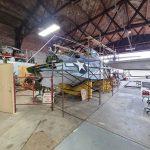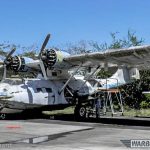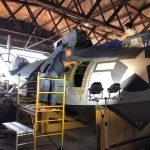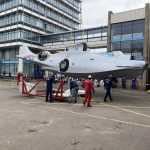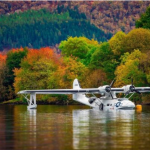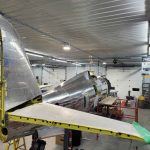There has been a flurry of activity in the world of surviving PBY Catalinas and their many variants this year. To help summarize some of the more significant details, here is a comprehensive update based upon an original article by the marvelous Catalina Society – posted here (with their permission).
In this latest round-up of news regarding Catalinas around the world, we feature aircraft from as far afield as Russia, Australia, New Zealand, Canada, and the USA. This article is derived from the latest edition of The Catalina News, the print magazine which subscribers to The Catalina Society receive as part of their membership.
Russia
From time-to-time, a Catalina survivor will simply go ‘missing’… and such is the case with a PBY-5A last registered in the USA as N4582U. Consolidated built this aircraft as hull number 1821 at their plant in San Diego towards a US Navy contract in 1944. As BuNo.46457, the aircraft joined the U.S. Navy’s Patrol Squadron VP/VPB-94 for a brief period before transfer to the Força Aérea Brasileira (Brazilian Air Force) in late-1944. The Catalina initially served in her new role as FAB 11, but later gained the identifier 6510; she remained in service until the Brazilian military retired her in December 1981. Subsequently, the legendary American warbird collector, David Tallichet, acquired the airframe. Registered as N4582U, the aircraft flew from Brazil to Fort Lauderdale, Florida some time in 1983. Tallichet worked out an arrangement with the U.S. Air Force Museum (now the National Museum of the U.S. Air Force) in 1984 and had the aircraft flown to Albuquerque, New Mexico where it spent the next several decades displayed in the open as part of the Rescue Memorial Museum at Kirtland Air Force Base. The Catalina wore a couple of liveries during that time, being painted first as US Air Force OA-10A Catalina 44-34077 and then as PBY-5A 46457. While the flying boat never flew again after that early 80’s ferry flight to New Mexico, it wasn’t until December 3rd, 2014 that her US registration was canceled in a paperwork ‘tidy up’ at the Federal Aviation Administration. During at least some of her time in New Mexico, the aircraft had remained under the ownership of its initial purchaser, ‘Project Catalina’, but at some point the National Museum of the US Air Force (NMUSAF) formally acquired her in an updated Bill of Sale. At this point, the aircraft’s ownership history becomes somewhat hazy. Roger B. Kelsay of Hillsboro, Oregon is known to have purchased the aircraft from the NMUSAF on September 26th, 2016, but then a company registered as JG-5 LLC of Cave Creek, Arizona acquired it the following December. Subsequently, the Catalina was dismantled and moved from Kirtland AFB to an unknown location, believed to be somewhere in San Antonio, Texas. Intriguingly, the FAA noted the Catalina as canceled and ‘exported’ to the Russian Federation!
The Catalina then turned up at the workshops of the well-known warbird restorers, American Aero Services, in New Smyrna Beach, Florida. Here the aircraft received some refurbishing, but then it ‘disappeared’ again and, whilst I have been unable to discover how and when it traveled, it finally reappeared in early-2021 at the UMMC Museum in Verkhnyaya Pyshma, Sverdlovsk, Russia. In seemingly no time at all, the aircraft received a WWII-era livery representing a Soviet PBY-6A, PBN-1 Nomad or GST (a licensed-built PBY-5) – albeit, this transformation may have occurred at New Smyrna Beach before the Catalina departed for Russia. Regardless, the PBY is now the largest exhibit at the museum, and is finally housed undercover. The UMMC Museum, founded by the Ural Mining and Metallurgical Company (UMMC), is intended to preserve the memory of Russia’s past while also educating younger generations about the nation’s history. BuNo.46457 is presently the only complete Catalina preserved in the former Soviet Union, and although no PBY-5A’s served within their military, it seems appropriate that one should be there now representing the type as a whole.
Australia
In Australia, the Historic Aircraft Restoration Society (HARS) has not flown their former U.S. Navy PBY-6A Catalina (BuNo.46679/VH-PBZ) as regularly as usual, due largely to the pandemic, which forced the museum to close its doors for significant periods this year. However, the aircraft did take part in the flypast over Australia’s capital city, Canberra, on March 31st this year to celebrate the Royal Australian Air Force’s (RAAF) centenary as an independent air arm. Indeed, HARS provided no less than six of its aircraft for the flypast – a Douglas C-47, de Havilland Canada Caribou, Lockheed Neptune, and Orion, Bell UH-1, and, of course, Felix their Catalina. Over the years, HARS has re-insalled an eyeball and side-blister turrets on their Catalina as well as a host of internal features. Sadly, she no longer operates from water.
Meanwhile, at the Catalina Flying Memorial project in Bankstown near Sydney, New South Wales, work on the huge task of getting another Catalina flying continues, this being PBY-6A BuNo.46665 (VH-CAT). Sadly, Philip Dulhunty, the project’s founder, Chair, and driving force passed away on November 29th last year at the grand age of 96 (check out his Wikipedia entry to learn more about his varied and fascinating life). While Phil’s death will require a restructure of the organization’s management, Director Mike Boyce has pledged to continue the work on VH-CAT through his association with the Coral Sea Catalina Heritage Museum and has expressed confidence that this Catalina will fly again. The current plan will eventually see the Catalina form a centerpiece of the proposed museum at Bowen Airport, a town very closely associated with wartime RAAF Catalina operations.
Still, in Australia, there are changes afoot at the Rathmines Catalina Memorial Park Association (RCMPA) Catalina project. Work continues on the restoration of the organization’s PBY-5A (BuNo.48412/ex-N7238Z) in the Kilaben Bay area of Lake Macquarie, New South Wales, but the RCMPA released a significant media statement on September 4th to announce their negotiation of a new home for their Catalina, known as Our Girl. They stated: “Negotiations to gain approval to site and house Our Girl at Rathmines were not progressing at a pace, or direction, that would meet RCMPA’s timeframe to complete the restoration and provide a suitable facility in which to display her. As a result, we intend to relocate Our Girl from Kilaben Bay to the RAAF Williamtown Aviation Heritage Centre, where she will form part of the display. We wish to thank Air Force for their support in providing this outcome. The relocation will not happen for some time. There is a pre-existing unrelated project underway to upgrade the RAAF Williamtown Aviation Heritage Centre. Therefore, the Our Girl move is planned to occur once the upgrading of existing facilities at the Williamtown center is completed. We are pleased that as a result of this agreement with the Air Force, Our Girl will remain in Newcastle. We consider this to be a wonderful outcome for the Association and the dedicated volunteers completing the restoration.” We will feature an update on Our Girl in our next magazine.
New Zealand
Further south, Lawrence Acket provided some Catalina news from New Zealand. The Canadian Vickers-built Canso A (RCAF 11054/ZK-PBY) belonging to the New Zealand Catalina Preservation Society/Catalina Club of NZ has had another ‘gap year’ in operations due to Coronavirus restrictions, but there are hopes she will reactivate for the 2022 season. The main events planned so far will be an appearance at the Warbirds Over Wanaka International Air Show next Easter and some of the warbird open days at Ardmore. There are hopes that ZK-PBY can also attend the Napier Art Deco Festival in Hawke’s Bay during late February, 2022. Meanwhile, she is being kept in airworthy condition at New Plymouth on New Zealand’s North Island ready for when she can take to the air again. Recent work carried out has included overhauling the nosewheel oleo and shimmy dampener.
Back in Issue 93 of The World Catalina News magazine, I reported that the Air Force Museum of New Zealand at Wigram, near Christchurch on New Zealand’s South Island had halted work on the restoration of Canadian Vickers-built OA-10A Catalina (44-34081/VH-SBV) for the foreseeable future. Thankfully, the aircraft’s partially restored hull is, at least, kept indoors and has received attention to keep it corrosion-free. A few months ago, museum personnel moved the fuselage outside for the first time in many years, before returning it to the hangar; it has to be said that she looked great in her new coat of white paint and with bow and blister turrets in place. Despite the slow rate of restoration, the airframe has come a long way since the Museum of Transport and Technology (MOTAT) organized her rescue from the fire dump at Port Moresby on Papua New Guinea in 1975!
Canada
The Canadian Warplane Heritage Museum’s (CWH) Canso A (RCAF 11084/C-FPQL) known as Mary K did not fly a great deal this year for the reasons we have all got used to, but she did perform at the Canadian International Air Show along the waterfront in Toronto, Ontario during the weekend of September 4th/5th. Apparently, this was the first time that the CWH had participated at this event for some years, but with the Canso’s performance receiving much appreciation, she will hopefully become a regular attendee in years to come.
As mentioned in the tribute to Andy Carswell in Issue 96 of The World Catalina News magazine, the port side bow and cockpit section from a Catalina are now on display outside the Andy Carswell Building – Canso Campus of the Veterans’ House in Ottawa, Ontario. Veterans’ House provides housing for homeless ex-servicemen and is built on the grounds of former Royal Canadian Air Force (RCAF) Station Rockcliffe, once a home for RCAF Canso amphibians! This nose section came from the long derelict PBY-5A BuNo.46590 (N68756) which once belonged to the Commemorative Air Force. MotoArt/Planetags of El Segundo, California had cut up the remainder of the aircraft to sell as functional artwork/mementos after the badly corroded and damaged hull had been deemed unfit for restoration. The fuselage’s most recent home prior to her scrapping was in the storage yard at the Pima Air & Space Museum near Tucson, Arizona. MotoArt restored the exterior of the nose section before it went to Canada in late April, and painted the exterior silver with the word ‘RESCUE’ stenciled in large letters below and behind the canopy to resemble the Canso A amphibians which Andy Carswell flew during his RCAF service. It is good to know that a substantial section of this airframe has been saved, and displayed in such an appropriate place too.
United States of America
Talking of Pima’s storage yard, the population of PBY and Canso hulks on site there has further diminished with the departure of the two derelict and much-stripped-out fuselages from PBY-5A Catalina BuNo.48396 (N10609) and a Canso A (either RCAF 9829 or 9839 – precise identity unknown). Soaring By The Sea LLC acquired these remnants as a parts source for their airworthy Canso A (RCAF 9767/N9767). Both airframe hulks were loaded onto huge flatbed trucks and roaded all the way from Arizona to Soaring’s base in Eugene, Oregon, departing on February 27th and arriving on March 1st. Peter Houghton, speaking for the new owners, advised that as many usable parts as possible will be salvaged as spares to keep N9767 flying. The nose section from the former Canso will be used to graft the bombardier’s glass and turret back onto N9767 at some point; its bulkheads and ring frames will enter storage in case they are needed at some future point. These reports make it seem as if little will be left of these long-suffering airframes once parts recovery is complete. More on the activity at Soaring By The Sea will feature in our next magazine.
Many thanks indeed to David Legg and the Catalina Society for allowing us to reproduce some of their news regarding the magnificent flying boat. For more information about the Catalina Society, please visit www.catalina.org.uk/
And finally, as an update to our own April 2021 progress report regarding PBY-6A Catalina BuNo.64097 with the Commemorative Air Force Lake Superior Squadron in Superior, Wisconsin, we recently published further news describing the restoration work which has taken place through the end of October this year.







